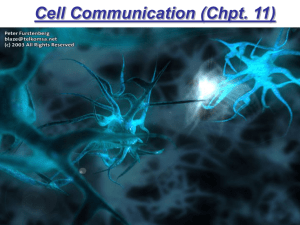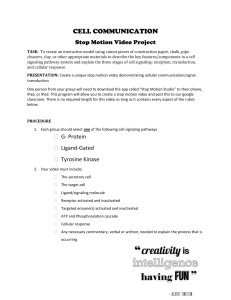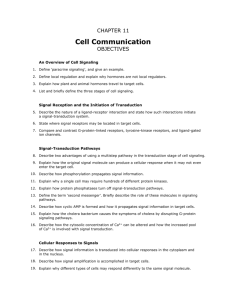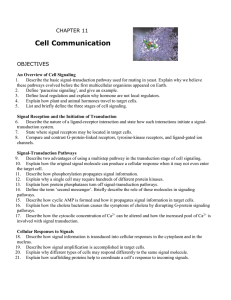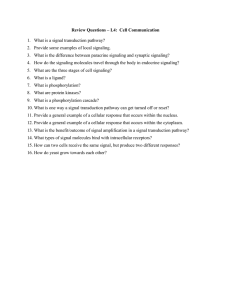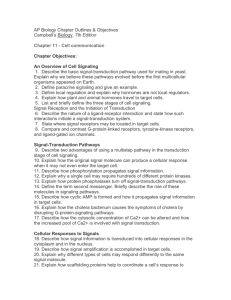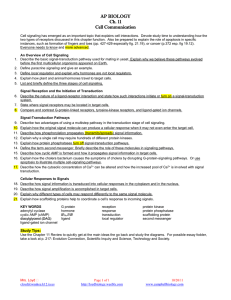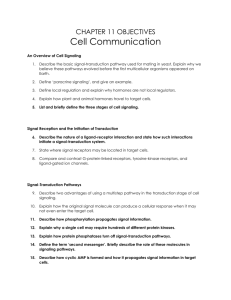AP Biology: Cell Communication & Cell Cycle Outline
advertisement
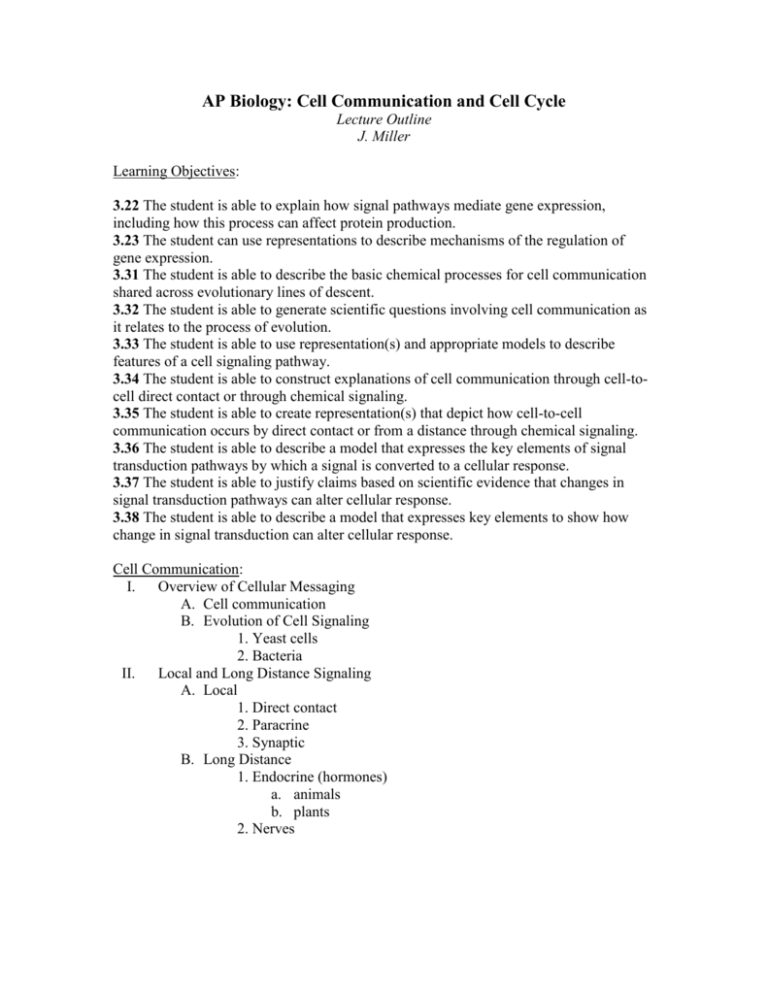
AP Biology: Cell Communication and Cell Cycle Lecture Outline J. Miller Learning Objectives: 3.22 The student is able to explain how signal pathways mediate gene expression, including how this process can affect protein production. 3.23 The student can use representations to describe mechanisms of the regulation of gene expression. 3.31 The student is able to describe the basic chemical processes for cell communication shared across evolutionary lines of descent. 3.32 The student is able to generate scientific questions involving cell communication as it relates to the process of evolution. 3.33 The student is able to use representation(s) and appropriate models to describe features of a cell signaling pathway. 3.34 The student is able to construct explanations of cell communication through cell-tocell direct contact or through chemical signaling. 3.35 The student is able to create representation(s) that depict how cell-to-cell communication occurs by direct contact or from a distance through chemical signaling. 3.36 The student is able to describe a model that expresses the key elements of signal transduction pathways by which a signal is converted to a cellular response. 3.37 The student is able to justify claims based on scientific evidence that changes in signal transduction pathways can alter cellular response. 3.38 The student is able to describe a model that expresses key elements to show how change in signal transduction can alter cellular response. Cell Communication: I. Overview of Cellular Messaging A. Cell communication B. Evolution of Cell Signaling 1. Yeast cells 2. Bacteria II. Local and Long Distance Signaling A. Local 1. Direct contact 2. Paracrine 3. Synaptic B. Long Distance 1. Endocrine (hormones) a. animals b. plants 2. Nerves III. IV. V. VI. VII. Stages of Signaling A. Reception B. Transduction C. Response Reception A. Ligands B. Membrane receptors 1. G Protein – Coupled Receptors 2. Receptor Tyrosine Kinases a. Kinases b. Mechanism 3. Ligand-gated ion channel C. Intracellular Receptors Transduction A. Signal Transduction Pathway B. Second Messenger Response A. Regulation of transcription B. Amplified responses C. Fine tuning Apoptosis Cell Cycle I. Introduction A. Cell Theory B. Cell Division C. Functions: 1. Reproduction 2. Growth and Development 3. Tissue Renewal D. Control of Division II. Duplication of DNA A. Genetic Material 1. Genome 2. Packaging 3. Number of Chromosomes B. Structure of Chromosomes III. Phases of the Cell Cycle A. Interphase B. M – mitotic phase IV. V. VI. VII. Mitotic Phase A. Prophase B. Prometaphase C. Metaphase D. Anaphase E. Telophase F. Cytokinesis Binary Fission (bacteria) Control of Cell Cycle A. Checkpoints (G1, S, G2, M) B. Go C. Concentration of regulatory proteins D. Growth Factors Loss of Cell Control A. Cancer cells B. Benign tumor C. Malignant Tumor D. Metastasis E. Treatments 1. Radiation 2. Chemotherapy
